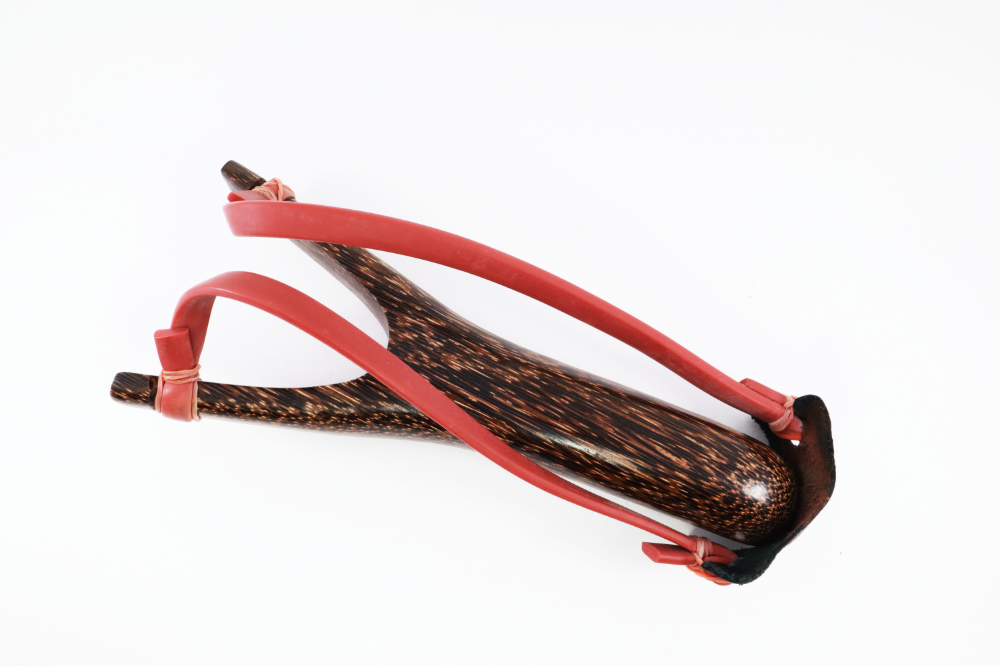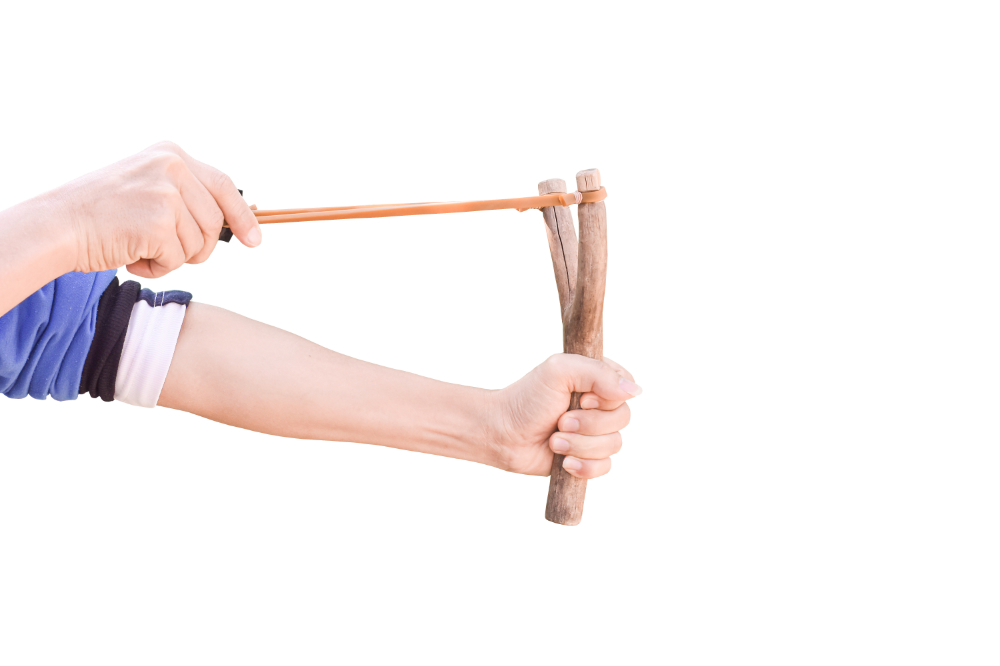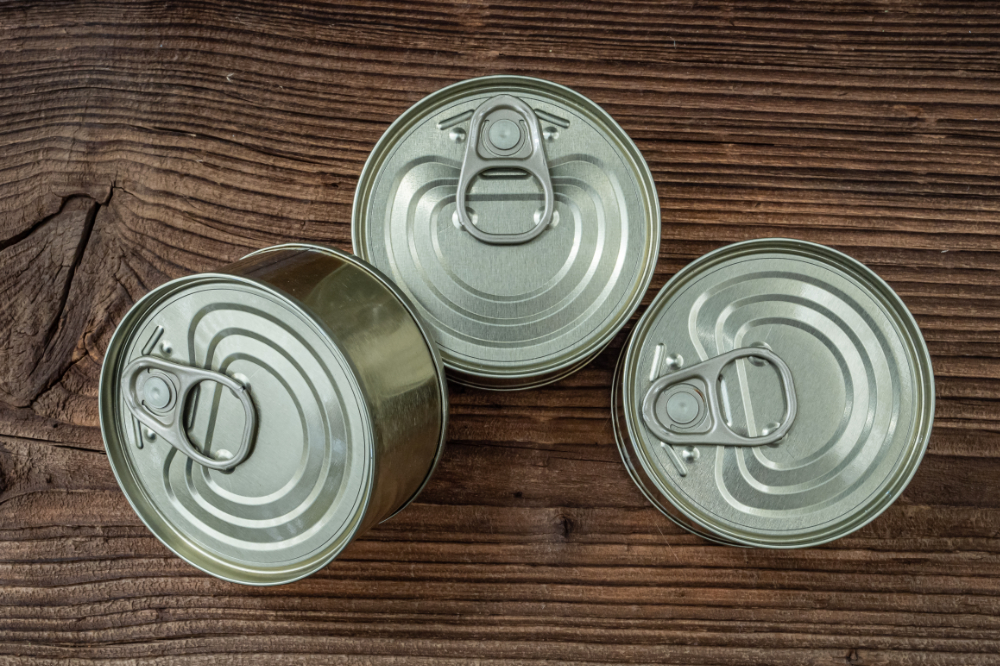The slingshot, a seemingly simple weapon, has a rich history and versatile applications that extend far beyond its humble origins. Traditionally crafted from a Y-shaped frame and rubber bands, slingshots have been used for hunting, sport, and even survival. In this article, we delve into the fascinating world of slingshots, exploring their uses and the craft behind making one.
Historical Roots:
Slingshots, also known as catapults, have been used by various cultures throughout history. In ancient times, they were used in warfare, a practice famously associated with David and Goliath. Over the years, slingshots have transitioned from military tools to versatile devices used for various purposes.
We as kids may have used slingshots while playing in the woods many years ago, this is not acceptable for today’s children. No one wants to injure someone’s eyes or have our child injure another’s. It’s better just to avoid this altogether. These are only to be used as a hunting device by adults.
Modern Uses:
Target Shooting:
Slingshots have evolved into a popular sport. Enthusiasts participate in target shooting competitions, where accuracy and technique are paramount. This recreational activity has led to the development of high-performance slingshots designed for precision.
Hunting and Survival:
In some parts of the world, slingshots are still used for hunting small game. Their quiet and lightweight nature makes them an excellent choice for survival situations, allowing hunters to procure food without the need for ammunition.
Fishing:
Slingshots equipped with specially designed arrows can be used for fishing. Anglers utilize slingshots to shoot arrows into the water, securing fish with barbed tips. This method is popular among some indigenous communities.
Wildlife Conservation:
In certain regions, slingshots are employed for wildlife conservation efforts. Non-lethal deterrents, such as rubber balls, are shot to scare away animals without causing harm, protecting crops and livestock.

Crafting Your Own Slingshot:
Selecting Materials:
Traditionally, slingshots are crafted from wood. Popular choices include oak, maple, or walnut. The Y-shaped frame should be sturdy and well-balanced.
Choosing Bands:
Rubber bands or surgical tubing are commonly used for the bands. TheraBand Gold or flat bands are popular choices due to their elasticity and durability.
Constructing the Slingshot:
Carve the Y-shaped frame, ensuring it fits comfortably in your hand. Attach the rubber bands securely, creating a pouch for holding ammunition. Practice proper band attachment techniques to avoid misfires and ensure safety.
Ammunition:
Slingshot ammunition, also known as shot, varies from small stones to steel balls and clay pellets. Experimenting with different types can enhance your accuracy and targeting skills.
Safety First:
When using a slingshot, safety goggles are essential to protect your eyes. Always be aware of your surroundings and use your slingshot responsibly.
The slingshot, with its historical significance and modern applications, continues to captivate people worldwide. Whether for sport, survival, or wildlife conservation, this age-old device remains a testament to human ingenuity. So, pick up a slingshot, appreciate the craftsmanship behind it, and explore the endless possibilities it offers in the realms of fun, sport, and outdoor adventure.




